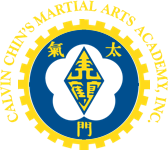The History of Wu Style Tai Chi
Sifu Calvin Chin practicing Snake Creeps Down posture
Tai chi (taijiquan) is a Chinese martial art whose origin has been debated for centuries. Some credit a Taoist monk of the 14th century, the legendary, Chang Sen-Feng. Wang Chung-Yueh a schoolteacher named the practice and translated tai chi chuan as the "grand ultimate fist". The form was first taught in Chen Chia Kuo village in the Wen district of Henan, China. This old Chen style contained dynamic movements, resembling kung fu. Its similarities to the Shaolin fighting arts were, in part, due to the close proximity of the Henan Temple to the Chen village.
Yang Lu-Chan (1799-1872) was a young servant in the Chen village. He accidentally came upon a training session and continued to observe other sessions in secrecy. Though tai chi was a family art, he was accepted as a student, when his talents were discovered. Yang passed this knowledge to Wu Yu-Seong (1812-1880), a wealthy scholar whose connections placed Yang in the position of private instructor to the Royal Army during the Ching period. Chuan-You (1834-1902), a Manchu captain in the imperial guard was another master student of Yang Lu-Chan.
The art of tai chi chuan was not taught to the general public until the first school was established in Beijing. Yang Cheng-Fu (1883-1936) and Yang Sou-Hou (1862-1930), grandsons of Yang Lu-Chan and Wu Chien-Chuan (1870-1942), Chuan-You’s son, were invited to teach at the Beijing Athletic Research Institute in the early years of the Republic. Respectively, Yang Cheng-Fu and Wu Chien-Chuan were asked to develop large frame and small frame tai chi forms to teach at the school. Students differentiated the forms as Yang and Wu. The new Yang was modified, practiced slower, and eliminated the more strenuous postures. The new Wu style was also modified from the Yang Lu-Chan branch. Wu Chien-Chuan developed a form for short-range body contact; thus movements became smaller and more compact.
Wu tai chi developed into two branches in Beijing, one from earlier students of Chaun-You, and the other from students of Wu Chien-Chuan. This style has been primarily transmitted from Beijing, Shanghai and Hong Kong. Wu Chien-Chuan’s daughter, Wu Ying-Hua (1906-1996) and her husband Ma Yueh-Liang (1901-1998) lead the Shanghai Chien-Chuan Tai Chi Society founded in 1932 by Wu Chien-Chuan. Wu 's disciple, Cheng Wing-Kwong and his sons, Wu Gong-Yi and Wu Gong-Cho are credited with spreading Wu style to Hong Kong and throughout Southeast Asia.
Ng-Wei Nung
In Hong Kong, Ng-Wei Nung (-1991), of the Eagle Claw system studied tai chi under Cheng Wing-Kwong. Among those whom Ng taught was Kwong Tit-Fu (1926-1999), a Hung Gar teacher and practitioner of Chinese medicine. Kwong immigrated to the US and it was in Boston, that he was introduced to Calvin Chin (1950-), a student and part-time martial arts instructor. After considerable analysis of martial arts theory, Kwong Tit-Fu founded his own system, Fu Hok Tai He Morn, with Wu style tai chi, Hung Gar Tiger Crane and Mu Dong Yat Hei Ngm Hang Morn as the three component systems. Today, Calvin Chin (1950-) is a 5th generation Wu stylist who teaches all three systems at his Newton academy and is sanctioned to carry the tradition of Fu Hok Tai He Morn.
The Practice of Tai Chi
Tai chi is based on the Taoist philosophy of the Yin and Yang, (opposite attributes that complement in nature). It is generally practiced with slow and continuous movements, choreographed into what is known as "the form". Relaxed whole-body movement through a non-taxing routine promotes optimal harmony between mind and body; it stimulates new mental and physical awareness. Practicing the form, one learns to quiet the mind, relax the body and breathe deeply. The immediate outcome is physical and mental stress relief. Longer term practice will heighten sensory and spatial awareness, contributing to an enhanced state of well being.
Although tai chi was first developed as a martial art, this aspect requires full understanding of the principles and is more time-consuming to master. Tai chi is active meditation, achieved when the mind controls the movements. Each posture and transition reaches structural integrity, requiring every muscle and joint to be exercised in fluid motion. This is intent, and it is what characterizes tai chi as a martial art. The martial arts theory not only provides a guide to movement, for many it provides the stimulus for refinement.
Today, most people practice tai chi for its many health benefits. It has been recognized in China for centuries as a healing art and a qigong practice. Qigong exercise develops a consciousness aboutbreath control. Tai chi goes further and becomes dynamic qigong by incorporating the movements into a sequence. What results is uninterrupted circulation of chi. In Chinese medical theory, "chi or qi" flows through channels known as "meridians". Although chi has many different meanings in Chinese, it is most often referred to in this context as a vital energy. When this energy is blocked, an imbalance results in the body's normal regulation. This results in disease and various ailments. The uninterrupted flow of chi improves circulation to the organs, restoring the balance in the body's regulatory system, boosting the immune system, and ultimately attributing to one's well being. In China, where tai chi is known as a form of managed health care, it is often prescribed to the weak or ailing. More recently, the US medical community has been conducting a number of studies regarding the health-related benefits of tai chi. The practice has been found to improve balance in the elderly, lower blood pressure, improve arthritis, and provide a state of greater relaxation and focus. Ongoing studies continue to reveal additional health benefits, as this ancient Chinese practice provides new discovery and intrigue to those all over the world.


